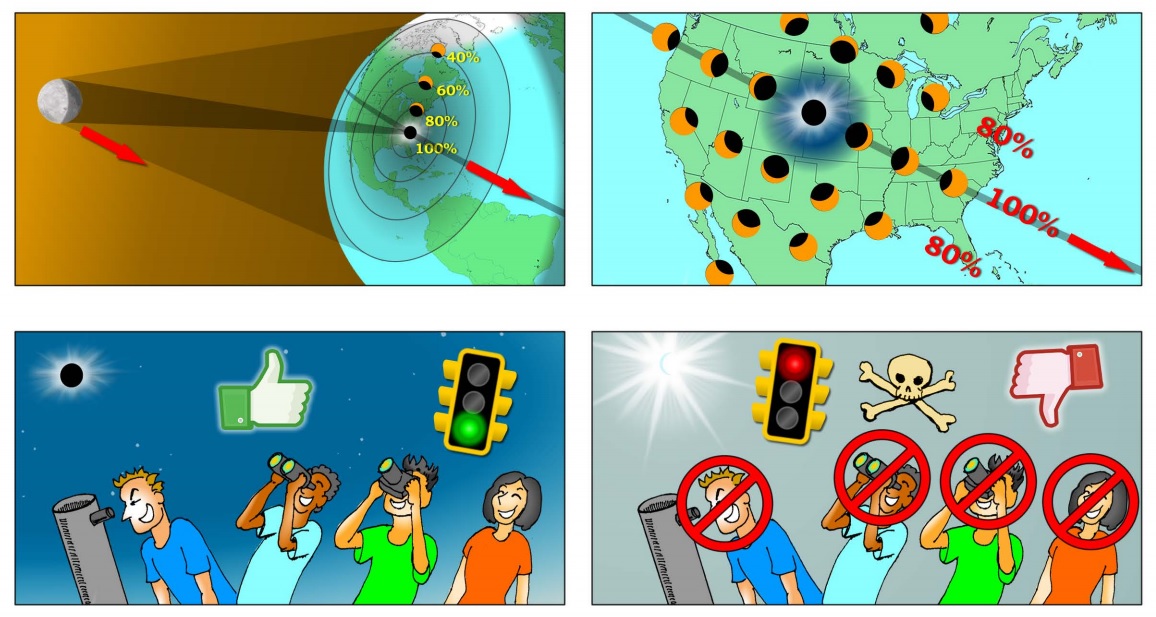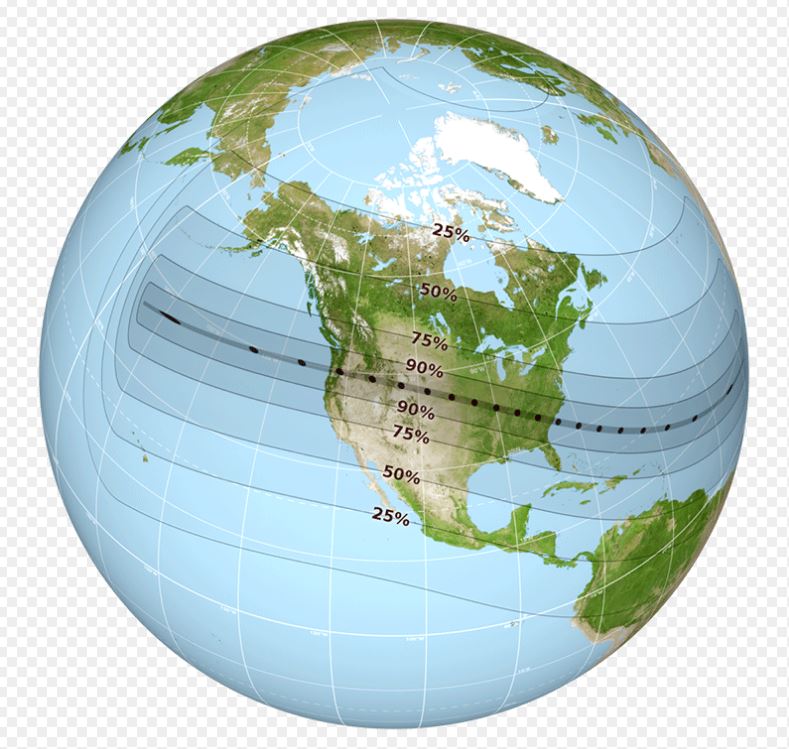New Solar Eclipse Flyer Made for All Language Speakers

A new flyer aimed at non-English speakers was released by the American Astronomical Society (AAS) and improves access to important safety information for the cross-country total solar eclipse on Aug. 21. By using graphics instead of text, the poster avoids restricting the message of eye safety to only English speakers.
AAS recommends handing out the flyer when distributing handheld solar viewers or eclipse glasses, along with manufacturer's instructions for these viewers.
The eclipse will be visible as either a partial or total eclipse in most of North America, and 220 million people live within a 1-hour drive of the path of totality. According to a NASA graphic, regions as far south as Colombia and Venezuela and as far north as the Alaskan Arctic Circle will see a quarter of the sun eclipsed by the moon. According to the 2010 United States Census, there are about 47 million speakers of non-English languages within U.S. borders alone. [Free Solar Eclipses Posters (and Map!) from Space.com!]

Such a safety flyer can help protect those people from the risks of viewing the sun incorrectly. Even if the sun is close to being completely covered by the moon, direct exposure of sunlight to an eye can cause serious damage.
"I have seen instances where the patient has eventually shown up with crescents burned into the back of the eye, and you can almost tell exactly when they looked," Ralph Chou, of the School of Optometry and Vision Science at the University of Waterloo in Canada, told Space.com in June.
A one-page poster called "How to View a Solar Eclipse Safely" formed the foundation of the new flyer, and was written by the AAS Solar Eclipse Task Force with the assistance of eclipse experts and support from the National Science Foundation. The advice has also been endorsed by NASA, the American Academy of Optometry, the American Optometric Association and the American Academy of Ophthalmology.
After making a Spanish translation of AAS' original eclipse safety flyer, the society decided to create a version that uses graphics instead of text so that speakers of all languages could understand the information, according to the AAS download page.
Get the Space.com Newsletter
Breaking space news, the latest updates on rocket launches, skywatching events and more!
To watch the eclipse safely, you can follow the AAS safety guidelines illustrated in the two-page document, available for free download from the AAS website.
Editor's note: Space.com has teamed up with Simulation Curriculum to offer this awesome Eclipse Safari app to help you enjoy your eclipse experience. The free app is available for Apple and Android, and you can view it on the web.
Follow Doris Elin Salazar on Twitter @salazar_elin. Follow us @Spacedotcom, Facebook and Google+. Original article on Space.com.
Join our Space Forums to keep talking space on the latest missions, night sky and more! And if you have a news tip, correction or comment, let us know at: community@space.com.

Doris is a science journalist and Space.com contributor. She received a B.A. in Sociology and Communications at Fordham University in New York City. Her first work was published in collaboration with London Mining Network, where her love of science writing was born. Her passion for astronomy started as a kid when she helped her sister build a model solar system in the Bronx. She got her first shot at astronomy writing as a Space.com editorial intern and continues to write about all things cosmic for the website. Doris has also written about microscopic plant life for Scientific American’s website and about whale calls for their print magazine. She has also written about ancient humans for Inverse, with stories ranging from how to recreate Pompeii’s cuisine to how to map the Polynesian expansion through genomics. She currently shares her home with two rabbits. Follow her on twitter at @salazar_elin.









